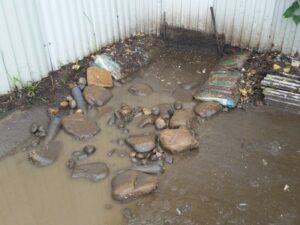 Environmental Contamination is the state of land or water in which any chemical substance or waste from known and unknown sources is released to the environment at concentrations beyond acceptable regulatory limits and possibly posing a risk to human health or the environment.
Environmental Contamination is the state of land or water in which any chemical substance or waste from known and unknown sources is released to the environment at concentrations beyond acceptable regulatory limits and possibly posing a risk to human health or the environment.
Many sources of petroleum and hazardous chemicals are a lot closer to us than we think. These sources include: a chemical plant or manufacturing facility down the road, an old gas station or dry cleaner facility nearby, or even what now appears as an empty lot where previous operations might have impacted soil and/or groundwater at the subject site. It is important to assess the property and the surrounding area to identify where these contaminated sites are, and if they pose a threat to your property or potential acquisition; That way potential threats can be identified and delineated and future contamination can be addressed.
Best Management Practices to Prevent Environmental Contamination:
Step 1: Store hazardous materials including fuel, oils, and chemicals, in safe covered areas that can prevent any accidental spills from occurring. Make sure that when storing these materials, you are labeling them as well.
Step 2: Extra precautions are key when handling hazardous liquids. Train your staff and create an emergency spill response procedure in the event of a chemical spill. You should always try to have spill clean-up equipment clearly labeled and ready for use in case of an emergency.
Step 3: Have a StormWater Pollution Prevention Plan (SWPPP) prepared and train your staff on how to prevent and address minor and major spills or releases of chemicals at your site.
Step 4: Obtain all required permits and licenses, and maintain compliance with their conditions, implement best management practices along with recordkeeping to keep your premises and grounds free from litter and waste materials, ensure drains and collection pits are clear of debris, train staff and display signage about the hazards of chemical use.
Step 5: Ensure your wastes are stored in proper containers, labeled properly, and the waste is profiled and sent to proper disposal facilities.
Additional Recommendations
In concert with the best management practices listed above, we recommend that the stakeholders in a property sale or purchase conduct Phase 1 and Phase 2 environmental site assessments in advance of a land sale or purchase prior to the closing date, while allowing 30-60 days to complete necessary due diligence.
